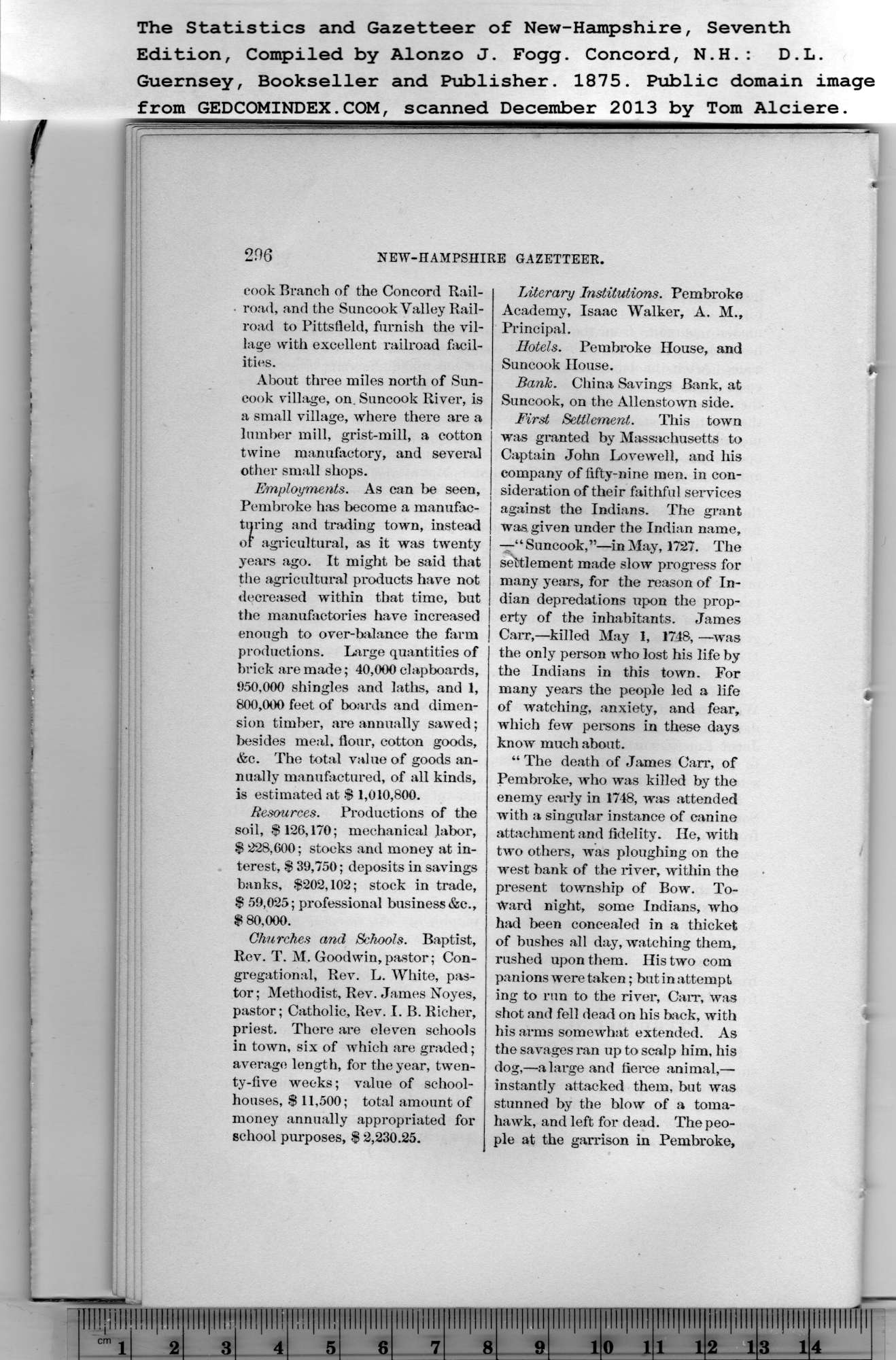|
cook Branch of the Concord Rail-
road, and the Suncook Valley Rail-
road to Pittsfield, furnish the vil-
lage with excellent railroad facil-
ities.
About three miles north of Sun-
eook village, on. Suncook River, is
a small village, where there are a
lumber mill, grist-mill, a cotton
twine manufactory, and several
other small shops.
Employments. As can be seen,
Pembroke has become a manufac-
turing and trading town, instead
of agricultural, as it was twenty
years ago. It might be said that
the agricultural products have not
decreased within that time, but
the manufactories have increased
enough to over-balance the farm
productions. Large quantities of
brick are made; 40,000 clapboards,
050.000 shingles and laths, and 1,
800.000 feet of boards and dimen-
sion timber, are annually sawed;
besides meal, flour, cotton goods,
&c. The total value of goods an-
nually manufactured, of all kinds,
is estimated at $ 1,010,800.
Resources. Productions of the
soil, $126,170; mechanical labor,
$ 228,600; stocks and money at in-
terest, $ 39,750; deposits in savings
banks, $202,102; stock in trade,
$ 59,025; professional business &e.,
$80,000.
Churches and Schools. Baptist,
Rev. T. M. Goodwin,pastor; Con-
gregational, Rev. L. White, pas-
tor ; Methodist, Rev. James Noyes,
pastor; Catholic, Rev. I. B. Richer,
priest. There are eleven schools
in town, six of which are graded;
average length, for the year, twen-
ty-five weeks; value of school-
honses, $ 11,500; total amount of
money annually appropriated for
school purposes, $ 2,230.25. |
IMerary Institutions. Pembroke
Academy, Isaac Walker, A. M.,
Principal.
Hotels. Pembroke House, and
Suncook House.
Bank. China Savings Bank, at
Suncook, on the Allenstown side.
First Settlement. This town
was granted by Massachusetts to
Captain John Lovewell, and his
company of fifty-nine men. in con-
sideration of their faithful services
against the Indians. The grant
was given under the Indian name,
—“Suncook,”—in May, 1727. The
settlement made slow progress for
many years, for the reason of In-
dian depredations upon the prop-
erty of the inhabitants. James
Carr,—killed May 1, 1748, —was
the only person who lost his life by
the Indians in this town. For
many years the people led a life
of watching, anxiety, and fear,
which few persons in these days
know much about.
“ The death of James Carr, of
Pembroke, who was killed by the
enemy early in 1748, was attended
with a singular instance of canine
attachment and fidelity. He, with
two others, was ploughing on the
west bank of the river, within the
present township of Bow. To-
ward night, some Indians, who
had been concealed in a thicket
of bushes all day, watching them,
rushed upon them. His two com
panions were taken; but in attempt
ing to run to the river, Carr, was
shot and fell dead on his back, with
his arms somewhat extended. As
the savages ran up to sealp him, his
dog,—a large and fierce animal,—■
instantly attacked them, but was
stunned by the blow of a toma-
hawk, and left for dead. The peo-
ple at the garrison in Pembroke, |
